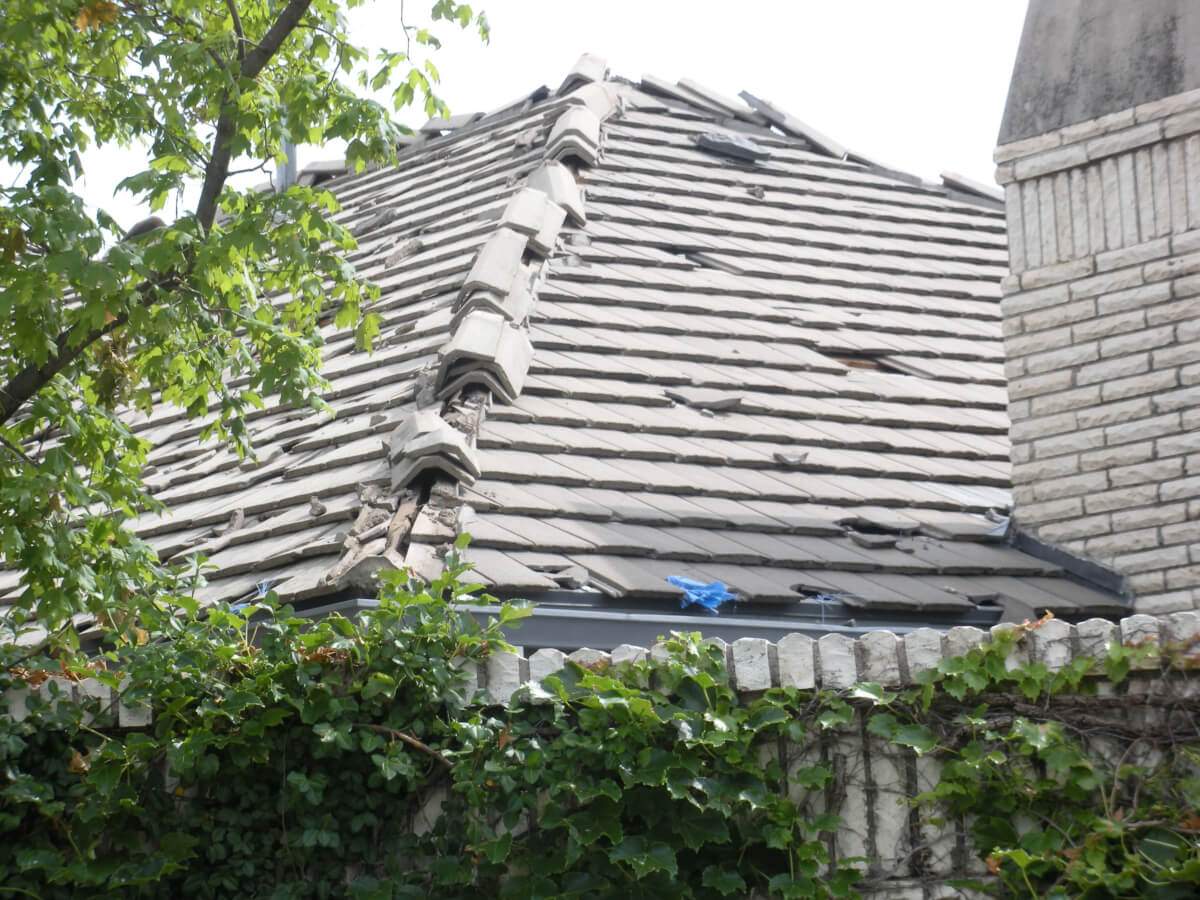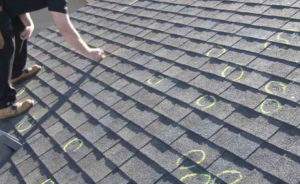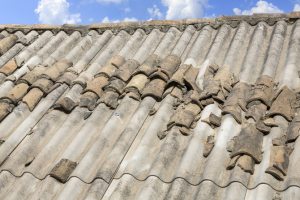ABBOTTS BLOG
How Long Do Roofs Last?

The roof of your home is easy to forget about. So long as it’s doing its job, it’s easy to take it for granted. It’s best to keep track of your roof’s age and condition, though, so that you can stay on top of repairs, and be ready when it’s time for a full replacement.
If you think your roof might be getting up there in age, or you’re moving into a new home and curious how long the existing roof will last, you’ll need to know some information about what material your roof is made out of, its age, and its condition. It’s important to understand common roofing materials, their lifespans, and signs that it might be time for damaged roof repair or to replace the roof entirely.
There are many common roofing materials, so here we provide a summary of the most common types, their attributes and expected lifespans, and what warning signs to look for.
Asphalt Shingles
 This is the most common type of roofing out there. It is very popular because it is easy to install, and an economical choice. The quality and lifespan vary based on the type of asphalt shingle you choose. It ranges in price from $70 to $120 per square.
This is the most common type of roofing out there. It is very popular because it is easy to install, and an economical choice. The quality and lifespan vary based on the type of asphalt shingle you choose. It ranges in price from $70 to $120 per square.
Lifespan and Wind Uplift Rating:
3 tab shingles are the least costly asphalt shingle, and last between 10 and 20 years. It has a maximum wind-uplift of 60-70 MPH. Development or “architectural” shingles are the next step up. These thicker shingles are more durable and last longer than 3 tab shingles, with an average lifespan of 15-25 years. They have an average wind-uplift of 110 MPH.
Premium shingles are book more aesthetically pleasing and thicker and longer lasting than mid-range architectural shingles. They can include special features, such as solar reflectance and hail protection. They last between 20 and 30 years, and have wind-uplift ratings comparable to those of architectural shingles.
You may need to repair a damaged asphalt roof if you observe the following:
- Heavy loss of sand granules
- Large cracks
- Chipping
- Dry and curled up appearance
- Significant storm damage
Concrete and Clay Tiles
 Clay tiles are a type of specialty roofing that you’ll most often see on upscale homes. Because these tiles are heavy, they require a roof frame specifically designed to be able to support their weight. The cost of clay and concrete tiles start at $300 to $500 per square.
Clay tiles are a type of specialty roofing that you’ll most often see on upscale homes. Because these tiles are heavy, they require a roof frame specifically designed to be able to support their weight. The cost of clay and concrete tiles start at $300 to $500 per square.
Lifespan and Wind Uplift Rating:
Clay tile roofs have a lifespan between 50 and 100 years. They have good wind uplift ratings, but shouldn’t be used in regions with hurricane-level winds, as cracked or loose tile pieces can be hazardous. Concrete tiles, a similar but less costly tile, has a lifespan of 40 to 75 years.
It may be time for damaged roof repair if your concrete or clay tile roof is experiencing:
- Cracked or loose tiles
- Leaks that cannot be easily repaired
Metal Roofing
Another common form of roofing, metal roofing encompasses standing seam, metal shingles, ribbed metal panels, and stone-coated steel tiles. Prices for metal roofing can vary greatly, depending on the variety you choose.
Lifespan and Wind Uplift Rating:
Standing seam lasts between 30 and 50 years, unless made from premium metals, such as steel and titanium, which can last over 100 years. They offer an average wind-uplift rating of 110 MPH.
Metal shingles, which are less expensive than standing seam, generally have a similar lifespan and wind-uplift rating.
Ribbed metal panels are more affordable still. The lifespan is 25 to 40 years with exposed fasteners, and 30 to 50 years when concealed fasteners are used.
Stone-coated steel tiles are another durable option. These have wind-uplift ratings between 110 and 150 MPH, and last for 30 to 50 years. These are particularly good for areas that are hurricane prone, as they are both lightweight and durable.
Your metal roofing pay be in need of repair if you are seeing:
- Discoloration
- Major, widespread rust
- Chipped, peeling paint
Slate
Slate is a very expensive, high-quality roofing material. As with clay and concrete tiles, the weight of this roofing material necessitates special framing. You would expect to see this material used on a high value home, or a home with quality features. The cost of slate roofs begins around $600 per square.
Lifespan and Wind Uplift Rating:
Slate roofs can last from 50 to 100 years. They have great uplift properties, however, because of the weight and sharpness of the materials, they can be very dangerous during a hurricane.
It is time to repair your slate roof if it is experiencing:
- Missing, loose, or cracked slates
- Leaks that aren’t easily repairable
Wood
This type of roofing was the go-to method for many hundreds of years. This category of roofing is comprised of cedar shingles and shakes (shakes are handcrafted, whereas shingles are generally cut by a machine), is popular for beach and cape cod style houses. It adds a rustic look to a home, and weathers to an attractive grey color. The cost begins at $100 to $150 per square.
Lifespan and Wind Uplift Rating:
These roofs last 20 to 35 years, and have a wind uplift rating of 110MPH or higher.
You will want to watch out for the following signs that damaged roof repair may be necessary for your wood roof:
- Cracked wood shingles
- Any signs of mold or rot
- Leaks that cannot be repaired
Synthetic Materials
Some synthetic roofing materials have gained in popularity, as it is not as heavy or expensive as other products, and is often less fragile than its counterparts. These materials can be developed to look like slate or wood, adding to their appeal. The most common synthetic materials used in roofing are EPDM rubber and PVC and TPO membranes. Prices for synthetic roofing begin around $300 per square.
Lifespan and Wind Uplift Rating:
EPDM is popular, but not very strong, and has a short lifespan. The expected lifespan of an EPDM roof is 25-30 years. There will likely be repairs necessary before that point, though — normally to leaky seams — which often happen around the 5-15 year mark.
PVC and TPO are more hearty alternatives to EPDM. In fact, they can last up to twice as long, and shouldn’t need repair as early on.
If you see either of the following, your synthetic roof should be inspected for damage and repaired:
- Large punctures to membrane
- Major leaks
No matter what type of roof you have, at one point or another, you are going to need to conduct repairs. If you are experiencing any signs of damage, Abbotts is here to help. Please contact us today for a free estimate.
Resources:
https://www.roofingcalc.com/how-long-does-a-roof-last/
https://www.hgtv.com/remodel/outdoors/top-6-roofing-materials

